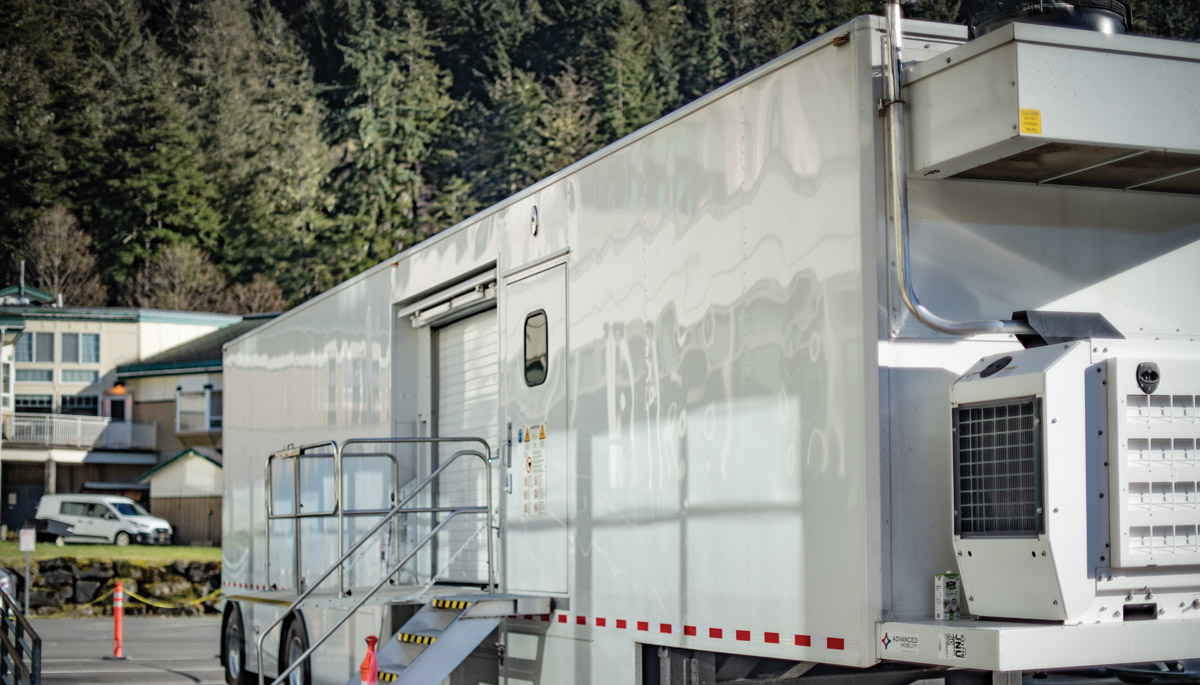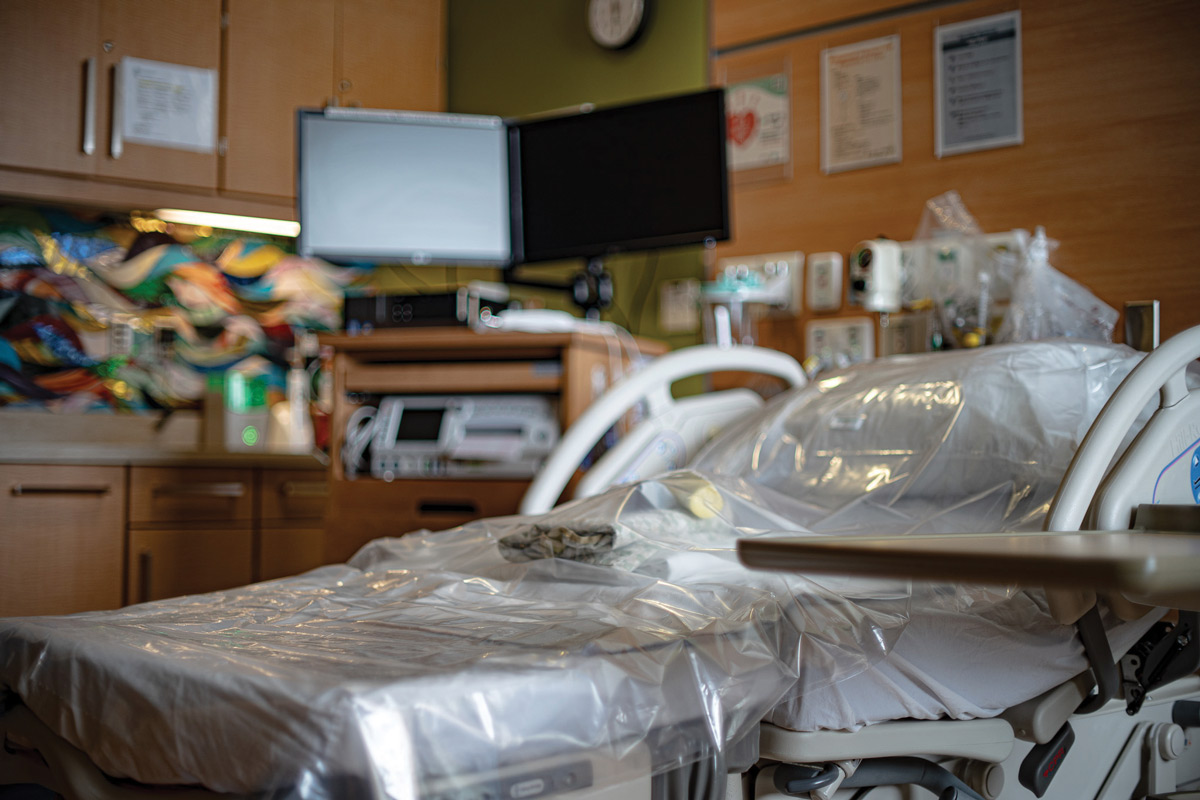or many Americans, a quick trip to the local urgent care or emergency room when the need for care arises is a standard expectation. This convenience, however, is not guaranteed for those in Alaska’s remote communities.
The implications can be profound: delayed treatments, limited access to specialized care, and a heavy reliance on self-care and community support.
When medical issues arise and a local healthcare facility lacks the capacity, equipment, or specialized expertise to address it, the reality for families in rural communities can be stark. It disrupts family life, imposes logistical challenges, and strains emotional and financial resources. Being away from familiar surroundings and loved ones during times of medical need can exacerbate stress and anxiety or exact an emotional toll. Children and other dependents at home may face disruption in their own care and routine, adding to the family’s overall stress.
The financial burden on residents of Alaska’s remote communities, stemming from the need to travel for healthcare, extends beyond the direct costs of transportation and accommodation. Crucially, it involves significant time away from work, leading to lost wages and productivity. This can also often result in disruption to subsistence activities like hunting, fishing, or harvesting. The time spent traveling for healthcare means less time for these essential activities, impacting not only individual financial stability but also the economic health of the entire community.
Recognizing the challenges, community and tribal organizations are investing in improving healthcare infrastructure.
Mikel Insalaco

Mikel Insalaco

Bartlett Regional Hospital in Juneau is undertaking a significant advancement in healthcare delivery with the replacement of its CT and MRI equipment. Incorporating the latest imaging technology, Bartlett Regional Hospital aims to increase its capacity and capability for advanced diagnostic care. This improvement is crucial, particularly in a region where timely access to sophisticated medical imaging is essential for quality patient care.
By upgrading these facilities, Bartlett Regional Hospital is taking a proactive step in reducing the need for patients to travel farther for crucial diagnostic services. It underscores the hospital’s commitment to ensuring that, even in less accessible regions, residents can benefit from state-of-the-art medical imaging, thereby improving overall healthcare outcomes in these communities.
In May 2023, the hospital took another step forward in patient care, signing a lease agreement with Intuitive for the da Vinci Xi Surgical System, making it the first hospital in Southeast to offer minimally invasive, robotic-assisted surgeries.
The system was immediately put to good use; Nicholas Newbury, the hospital’s chief of surgery, performed the hospital’s first surgery with the system on May 5, 2023. “This is just the start of what we can do for surgery in Southeast,” said Newbury last May. “Other surgical specialties will be able to leverage the robot for advanced and complicated procedures.”
Bartlett Regional Hospital’s CEO, David Keith, sees the system’s potential to improve care in Southeast in several ways. “This new technology is critical to attracting new and skilled surgeons, as young doctors expect robotic capabilities in hospitals,” Keith stated in May. Additionally, “This investment will also allow Bartlett to offer new surgical service lines in the future that typically require travel to the Lower 48.”
The Norton Sound Health Corporation is undertaking an essential expansion of its eldercare facilities at Quyanna Care Center in Nome, showcasing its commitment to improving community healthcare. This project, designed by Architects Alaska, is scheduled to begin construction this summer and targeted for completion in spring 2025.

Architects Alaska
Enhancements to the facility include a large outdoor balcony, spacious resident bedrooms, and modernized restrooms. The addition of twelve new beds is a crucial aspect of this expansion, addressing the increasing need for comprehensive eldercare services in Nome. The design focuses on enhancing social interaction and engagement among residents, aligning with the broader goal of improving their overall well-being. These improvements aim to significantly enrich the quality of life for elders in the community.

Architects Alaska

“Addressing the challenges of rural healthcare requires a combination of the heart and head,” says Stephen Henri, principal architect of Architects Alaska. “Meeting most of the needs of elders and community members can be accomplished with technology and careful planning and design of facilities. However, part of the equation needs to be making the users feel heard and understood. They need to know that you are taking care to create the best environment possible for healing and wellness.”
Careful planning and execution are critical in navigating the challenges of remote construction. Addressing the unique construction challenges posed by Nome’s distinct environmental and logistical conditions is paramount. Cornerstone General Contractors, serving as the construction manager and general contractor, is instrumental in this endeavor. As with all contractors performing remote work, responsibility encompasses managing logistics and adhering to strict deadlines—essential for the seamless advancement of the project.
For many residents in remote areas like Shaktoolik and Wales, access to primary and preventative care services can be limited. Recognizing this challenge, Norton Sound Health Corporation and Architects Alaska worked together and innovatively addressed these needs by establishing state-of-the-art, flexible facilities in these communities. These clinics, each encompassing an area of about 3,500 to 4,000 square feet, are based on an evolved design initially conceptualized for a clinic in Nome. This design was meticulously tailored to suit the unique requirements of the local populations. Key features of these clinics include comprehensive dental facilities, emergency treatment units, various examination rooms, and dedicated staff areas. An added consideration is the inclusion of residential suites to accommodate visiting patients or staff, providing a semblance of home comfort in challenging times.
Constructed on multipoint foundations, these clinics are uniquely engineered to protect the underlying permafrost, a crucial consideration in Alaska’s severe climate. This design also helps reduce snow buildup around the structures. The use of structural insulated panels in the walls, floors, and roofs ensures not only rapid assembly but also maximum energy efficiency and a comfortable interior ambiance, which is vital in the harsh Alaska environment.
The Shaktoolik Clinic, completed in 2019, exemplifies resilience with its enhanced structural features designed to withstand the harsh elements, including wind-driven seawater. Its strategic location at the edge of town incorporates necessary extensions for water and electrical utilities, addressing the community’s land erosion concerns. The Toby Anungazuk Sr. Memorial Health Clinic, on course for completion in 2024, follows in these innovative footsteps.
Unlike urban centers with myriad birthing options, Utqiaġvik’s choices are considerably limited. This constraint becomes more pronounced when complications demanding medical intervention arise, often compelling mothers to undergo extensive hospital stays far from home. A typical scenario might involve a mother needing a cesarean section, requiring the mother to remain near the hospital for weeks before and after her due date to ensure proper care.
The Arctic Slope Native Association is making significant strides in addressing this issue at Samuel Simmonds Memorial Hospital by expanding the mother/baby ward. This expansion includes a hybrid surgery suite capable of procedures previously referred outside of the hospital. This development is particularly crucial in a region like Utqiaġvik, where the nearest facility equipped for such specialized care can be hundreds of miles away.
By bringing essential services closer to home, Samuel Simmonds Memorial Hospital is not just elevating the standard of maternal care; it is substantially alleviating the logistical and emotional challenges faced by families in Utqiaġvik. This initiative represents a significant step in ensuring that mothers in Utqiaġvik have access to the necessary medical care within their community, thereby reducing the need for stressful and lengthy journeys to distant hospitals for vital birthing services.